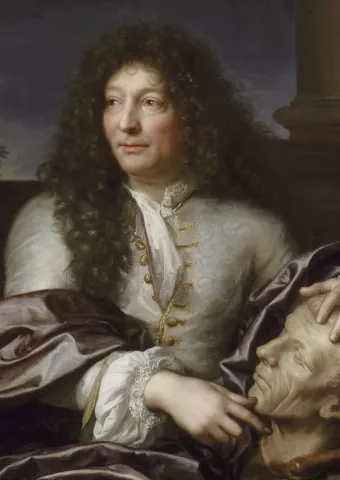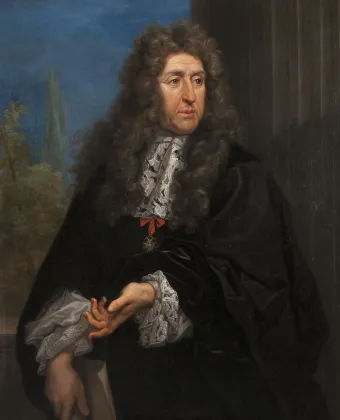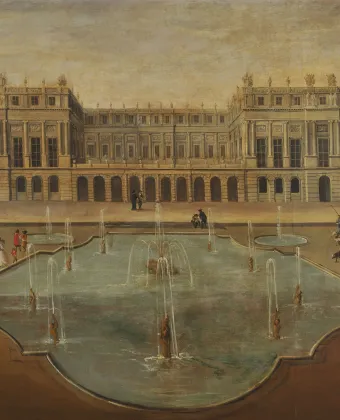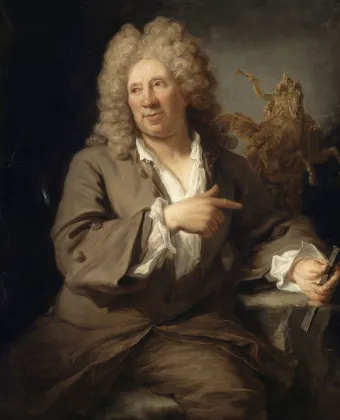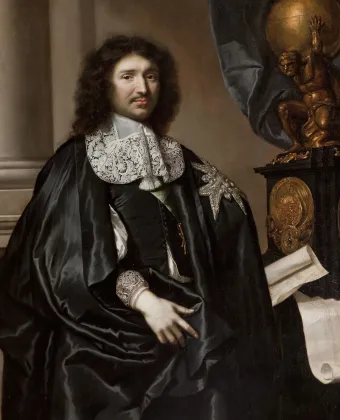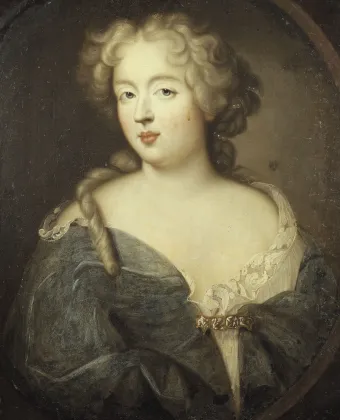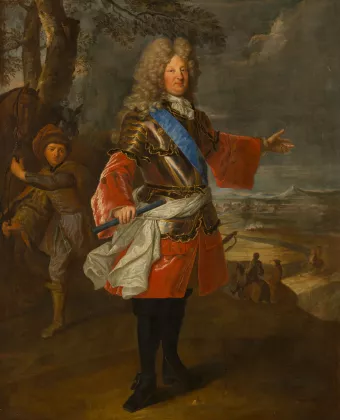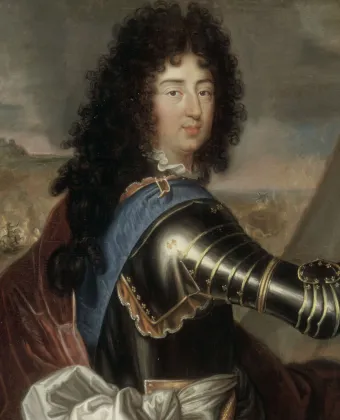Born in Troyes, Girardon was Le Brun’s closest collaborator, and was also protected by Chancellor Séguier. After studying Antiquity in Rome, he worked on the decoration for the Galerie d’Apollon in the Louvre, which was his first royal project, and then in the Tuileries. Arriving in Versailles in 1666, he started off with a showstopper: the group of Apollo served by nymphs, which he did in collaboration with Regnaudin. Initially placed in the middle of the Grotto of Thetis, it was later installed in the grotto designed by Hubert Robert in the 18th century. The work, whose design was inspired by Antiquity, became an iconic piece of Classical statuary of the 17th century thanks to the elegance of its figures.
Girardon was just as bold in his creation of the Pyramid Fountain held up by Tritons, crayfishes and Dolphins, and in the flowing female figures in the Nymphs bath, a lead relief work which later inspired Renoir. His talent earned him other important commissions, including the Saturn Fountain (1672-77), the statue of Winter (1675-83), of a remarkable old man transfixed by the cold with a stove at his feet, and the famous sculpted group of the Abduction of Proserpina by Pluto (1677-87). Originally designed for the Orangery Parterre, it was ultimately placed in the middle of the Colonnade in 1699, on a pedestal made by the artist in collaboration with the sculptor Robert Le Lorrain (1696-1699). This central placement affirmed Girardon’s reputation. Baroque in its composition but Classical in its figures, the three-figure group tossed a challenge to Bernini, whose work on the same subject only had two figures.
The artist’s rivalry with Bernini heightened when the king, dissatisfied with the equestrian statue that he had commissioned from Bernini when he came to France in 1665, entrusted its transformation into Marcus Curtius to Girardon in 1688. Relegated to the other end of the Lake of the Swiss Guard, it later became a source of interest again in the 20th century, and a lead replica was placed in front of the Louvre Pyramid.
Girardon created his final masterpiece in Paris: the equestrian statue in bronze of Louis XIV in Place Vendôme. Designed to scale with its surroundings, it influenced all similar statues in France and Europe. Girardon remained a loyal subject to the king to the end, and even died on the same day: 1 September 1715.



